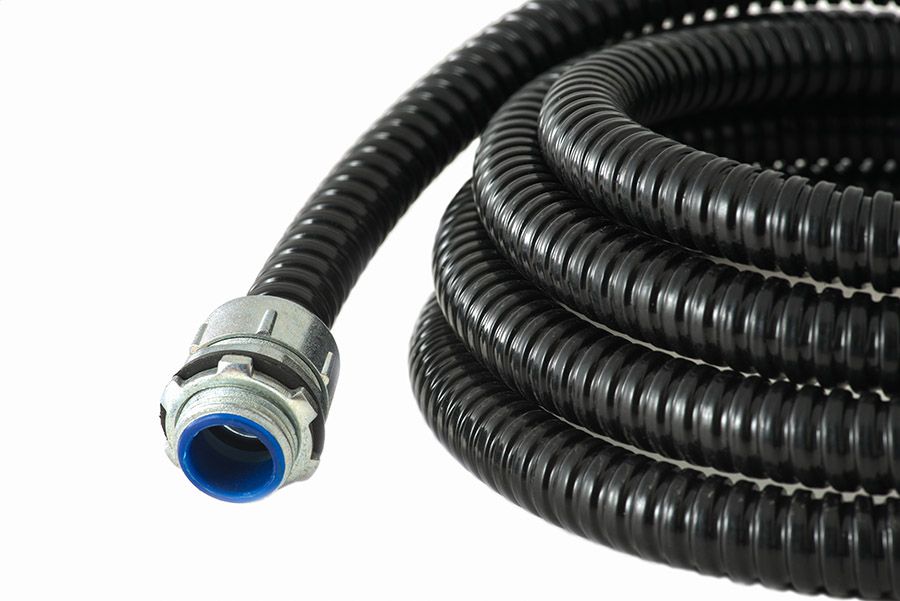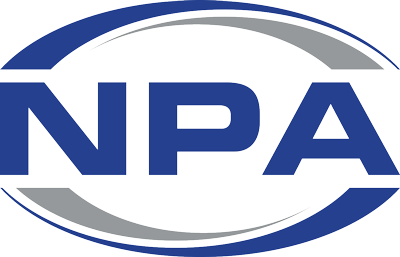
Conduit, or more specifically, electrical conduit is a very common purchase item in the construction industry and comes in many forms.
This buyer’s guide covers the topic of electrical conduit in some detail to help give those responsible for its purchase, more information to assist with purchase decision making.
What is conduit?
Conduit is a type of tubing or piping that is used to protect and route electrical wiring. It can be made from a variety of materials and is often used in construction projects to ensure that electrical wires are safely housed and protected from damage.
Uses for electrical conduit
The main purpose of electrical conduit is to protect and route electrical wires. It can also help to prevent damage to the wires from environmental factors, such as moisture, temperature changes, or impact. Additionally, conduit can make it easier to access and repair electrical wiring if necessary.
Some common uses for electrical conduit include:
- Running wires through walls and ceilings in residential or commercial buildings
- Protecting wiring for outdoor lighting or power sources
- Housing wiring for machinery or equipment in industrial settings
Conduit materials
There are several different materials that can be used to make electrical conduit, including:
- PVC (polyvinyl chloride)
- Polyethylene
- Metal (such as steel, aluminium, or galvanized steel)
- Fiberglass
- Flexible conduit (such as non-metallic, liquid-tight, or flexible metallic)
When to use the different conduit materials
The choice of conduit material will depend on several factors, including the environment in which the conduit will be used, the type of wiring being protected, and the budget for the project.
Here are some general guidelines for when to use different conduit materials;
- PVC conduit is a good choice for indoor use, as it is lightweight and relatively inexpensive. It is also resistant to moisture and corrosion. However, it may not be as durable as metal conduit and may not be suitable for use in areas with high temperatures.
- Metal conduit is a more durable and sturdy option, making it a good choice for outdoor use or in areas where the conduit may be subject to impact or other physical stress. It is also resistant to fire and can handle high temperatures. However, metal conduit can be more expensive than PVC and may be more difficult to install.
- Fiberglass conduit is a good choice for use in corrosive environments, as it is resistant to chemicals and moisture. It is also lightweight and easy to install. However, it may not be as durable as metal conduit and may be more expensive than PVC or polyethylene.
- Flexible conduit is a good choice for use in areas where the conduit may need to bend or flex. It is available in several different materials, including non-metallic, liquid-tight, and flexible metallic options. Non-metallic flexible conduit is lightweight and easy to install, but may not be as durable as other options. Liquid-tight flexible conduit is a good choice for use in areas with high moisture or where the conduit may be exposed to water. Flexible metallic conduit is a more durable option, but may be more difficult to install than other types of flexible conduit and more expensive.
What is cable conduit?
Cable conduit is a type of tubing or piping that is used to protect and route cables, wires, or cords. It is designed to provide a safe and secure housing for cables, and can help to prevent damage from environmental factors, such as moisture, temperature changes, or impact.
When is cable conduit used?
Cable conduit is typically used in construction projects where cables need to be run through walls, ceilings, or floors. It can also be used to protect cables in outdoor environments or in areas where cables may be subject to impact or other physical stress. Cable conduit is commonly used in residential, commercial, and industrial settings.
Some common applications of cable conduit include:
- Running cables through walls, floors, or ceilings in residential or commercial buildings
- Protecting cables for outdoor lighting or power sources
- Housing cables for machinery or equipment in industrial settings
What are the different types of cable conduit?
There are several different types of cable conduit available, each with its own advantages and disadvantages. The most common types of cable conduit include:
- PVC conduit: PVC conduit is a lightweight and relatively inexpensive option for protecting cables. It is resistant to moisture and corrosion, making it a good choice for indoor or outdoor use. PVC conduit is also available in a range of sizes and can be easily cut and installed.
- Polyethylene conduit: Like PVC conduit, polyethylene conduit is a good choice for outdoor installations because it is resistant to moisture and UV rays. It can be used to protect wiring for outdoor lighting, security systems, and other applications.
Polyethylene conduit is also a good choice for burying underground wiring, as it is resistant to moisture and chemicals. It can protect the wiring from damage caused by soil, rocks, or other objects.
- Metal conduit: Metal conduit is a more durable and sturdy option for protecting cables. It is available in a variety of materials, including steel, aluminum, and galvanized steel, and can handle high temperatures and physical stress. Metal conduit is also resistant to fire and can be used for both indoor and outdoor applications.
What’s the difference between flexible conduit and standard conduit?
Flexible conduit is a type of conduit that can bend or flex to accommodate cables in areas where traditional conduit may not fit. It is available in several different materials, including non-metallic, liquid-tight, and flexible metallic options.
Non-metallic flexible conduit is lightweight and easy to install, but may not be as durable as other options. Liquid-tight flexible conduit is a good choice for use in areas with high moisture or where the conduit may be exposed to water. Flexible metallic conduit is a more durable option, but may be more difficult to install than other types of flexible conduit.
Fiberglass conduit: Fiberglass conduit is a good choice for use in corrosive environments, as it is resistant to chemicals and moisture. It is also lightweight and easy to install. However, it may not be as durable as metal conduit and may be more expensive than PVC.
Electrical metallic tubing (EMT): EMT is a type of thin-walled metal conduit that is lightweight and easy to install. It is often used for residential applications and is a cost-effective alternative to more expensive types of conduit.
More about polyethylene conduit
Polyethylene conduit is a type of plastic conduit that is known for its flexibility, durability, and resistance to moisture and chemicals. It is commonly used in a variety of applications, including outdoor installations, underground wiring, and industrial settings.
Here are some situations when you may want to consider using polyethylene conduit;
- Outdoor installations:
- Industrial settings: Polyethylene conduit is commonly used in industrial settings because it is resistant to chemicals and can withstand harsh environments. It can protect wiring for machinery, equipment, and other industrial applications.
- Cost-effective option: Polyethylene conduit is often less expensive than other types of conduit, making it a cost-effective option for some applications.
- Flexibility: Polyethylene conduit is flexible and easy to work with, making it a good choice for installations where the conduit needs to be bent or routed around obstacles.
In summary, polyethylene conduit is a good choice for outdoor, underground, and industrial installations where durability, resistance to moisture and chemicals, and flexibility are important factors. It is also a cost-effective option for many applications.
Summary of conduit purchasing considerations
When purchasing electrical or cable conduit, a purchasing manager should take the following factors into consideration:
- Material: The type of material used in the conduit will impact its durability, flexibility, and resistance to environmental factors such as moisture and temperature. Consider the application and environment where the conduit will be used and choose the material accordingly.
- Size: Conduit comes in a variety of sizes to accommodate different types and quantities of cables. Be sure to select the correct size of conduit to avoid damage to the cables and ensure that they fit properly.
- Installation requirements: Consider the installation process and requirements for the conduit, including how it will be secured and any fittings or accessories needed. Some types of conduit may be more difficult to install than others.
- Compliance with codes and regulations: Make sure that the conduit you select meets any applicable codes and regulations for the specific application and environment.
- Price: Conduit prices can vary widely depending on the material, size, and other factors. Consider your budget and balance the cost of the conduit with its durability and suitability for the application.
- Compatibility with other components: Ensure that the conduit is compatible with any other components being used in the system, such as connectors, fittings, or junction boxes.
- Supplier reputation: Choose a reputable supplier with a proven track record of delivering quality products and reliable service.
Considering these factors will lead to a more informed and prudent purchasing decision.
The experts at NPA would be happy to discuss your electrical conduit needs with you and answer any questions you may have.
Phone NPA today on (08) 8268 2733 or browse our online store here to see our extensive range of conduits and tubing.

